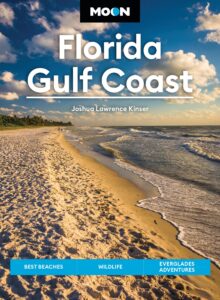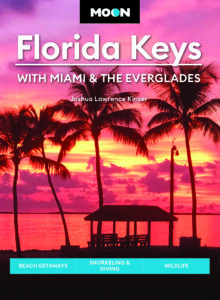Boca Raton and Fort Lauderdale
Boca Raton
Whoever named Boca Raton (pop. 99,244), which translates literally as “Rat’s Mouth,” clearly didn’t have an ear for future promotional bonanza. Despite the awkward name, the town has become one of the more chichi spots in the state. As in Palm Beach, Coral Gables, and Miami’s South Beach, the best of Boca dates from the 1920s, when architect and real estate promoter Addison Mizner, flush from his success building Mediterranean-style manors in Palm Beach, created a mini Venice of resorts and canals, which survives mainly in the shocking pink palazzo of the Boca Raton Resort (501 E. Camino Real, 561/447-3000, $250 and up), on the southeast side of town.
Downtown Boca has been turned into a massive stucco shopping mall, but it’s worth braving for a look inside the ornate Mizner-designed Town Hall, on US-1 (old Dixie Highway) downtown in Palmetto Park, which now houses the local historical museum (Mon.-Fri., $5).
Hwy-A1A misses most of Boca Raton, cruising past along the densely pine-forested coast. The beaches are accessible but hard to find; one well-marked stop along the way is the Gumbo Limbo Nature Center (561/544-8605, 9am-4pm Mon.-Sat., noon-4pm Sun., $5 donation) on the inland side of the highway, a mile (1.6 km) north of Mizner Park. A variety of native Floridian landscapes have been recreated here, letting you wander at will past coastal dunes, mangrove wetlands, and rare sabal palm hammocks. Across Hwy-A1A, Red Reef Park is a popular surfing beach.
Fort Lauderdale
Once famed for wild spring break frolics that saw thousands of college kids descending here for an orgy of drunken round-the-clock partying, Fort Lauderdale (pop. 182,595) is a surprisingly residential city, brought to a more human scale by the many waterways that cut through it. One of the largest cargo ports in the state, Fort Lauderdale also boasts more boats per capita than just about anywhere else in the United States, and over 165 mi (265 km) of canals, inlets, and other waterways flow through the city.
Downtown Fort Lauderdale has a few big, dull office towers, but along the New River there are some well-preserved historic buildings dating back to 1905, when the city first emerged from the swamps. Find out more by visiting the nifty Stranahan House (335 SE 6th Ave., daily, $12), off Las Olas Boulevard. This circa-1901 trading post and home, with broad verandas and high ceilings, is one of the most evocative historic places in the state.
Fort Lauderdale’s main beachfront bar and nightclub district is along Atlantic Avenue and Las Olas Boulevard, where you’ll find some nice sidewalk cafés and coastal-chic restaurants like Wild Sea Oyster Bar and Grille (620 E. Las Olas Blvd., 954/467-2555), a popular and stylish haunt where traditional seafood dishes are enlivened by a canny blend of exotic ingredients.
Miles of inexpensive motels line Hwy-A1A north of Fort Lauderdale, and unless there’s something big going on, you shouldn’t have trouble finding a room for under $100—half that in summer. One of the nicest places is the moderately priced, family-friendly Premiere Hotel (625 N. Fort Lauderdale Beach Blvd., 954/566-7676, $114 and up), with a pool, bar, and generally pleasant old-school 1960s vibe, just a short walk from the beach.
North of Fort Lauderdale, Hwy-A1A winds in along the coast through a series of funky, friendly beachside communities. South of Fort Lauderdale, Hwy-A1A heads inland and merges into US-1, returning to the coast for the run south to Miami Beach.
Related Travel Map
















